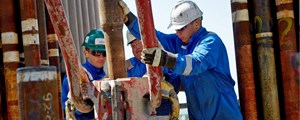Rising steel costs bring inflation woes to U.S. shale plays
HOUSTON (Bloomberg) --It’s getting more expensive to drill in the shale patch as rising prices for steel, cement and other supplies and services lead to higher costs for explorers, according to Citigroup Inc.
Inflation could reach 12% or more by the end of this year for the sector in North America, analysts including Scott Gruber wrote Friday in a note to investors. But oilfield service companies haven’t been able to command high enough pricing to book extra profits, even though they can pass most of their costs on to the producers they serve, Citigroup said.
Costs for everything from labor to diesel to steel have climbed in the oil field this year as explorers return to work following last year’s pandemic-driven crash in crude prices. Steel prices for the drill pipe used in new wells could rise about 50% in 2021, Citigroup said.
Related story: U.S. oil and gas jobs increased slightly in May as companies remain focused on debt
Oil production in the U.S. has remain subdued since last year’s plunge, though the number of rigs drilling for crude and natural gas has almost doubled since reaching a nadir last August. Explorers could tap the brakes on activity in the fourth quarter as they head into year-end price negotiations with contractors, Gruber said.
Service providers have found it difficult to hike pricing in North America, where competition is more fierce than it is in international markets. It’s one reason the world’s biggest oilfield contractors are pivoting away from the U.S. and Canada in search of growth overseas.



